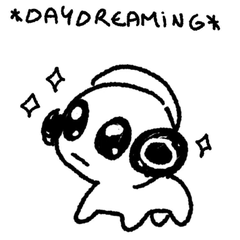Future city drawing
In this teaching, I will share with you the whole process from draft to completion. As long as you master the basic tools, there are many ways to get the same effect. Next I will walk you through the basic tools I use.
Drafts and thoughts
We first draw a few ideas in our heads. In the process, we can also refer to the photos of major cities for thought.
You can also use the perspective ruler to mark the perspective you want and draw the basic shape and level of the building. After establishing the perspective ruler, remember to press the red circle where the pen will align with the perspective you created.
Outline and hierarchy
Use selections to frame the basic outlines of cities and planets. The buildings that are closer to the camera are deeper, and the farther they are, the closer they are to the color of the sky, thereby creating a sense of atmospheric perspective. At least 3 layers are preferred. Each layer is separated by layers, so in this step I have three layers of city, one layer of planet, and finally the layer of sky.
Because the outline of the city is too simple, I used an eraser and a fountain pen to damage the large area to give the building details, and added two more buildings. In addition I used the airbrush tool to add a little purple on the background. In order to increase the atmosphere, I added a gradient effect to the building, from top to bottom, from shallow to deep. There are two ways to make this effect:
1. Press the red circle to select the location, lock the layer to prevent it from being painted out, and then use a spray gun or a gradient tool to draw the feeling of the building in the atmosphere.
2. Or create a new layer above the building layer and press the red circle to select "Crop with next layer". There is a pink in front of the layer, which means that the layer can only be drawn for the places where the lower layer has been painted.
City details
Create a new layer, press the red circle to select the place, there are many layer effects, we choose "highlight color (glow)", and draw bright details such as building windows.
Since the upper right is a bit empty, I added a flying boat, and similarly added a layer, and used a color similar to the background to create a sense of distance.
Behind the flying boat, use the same method to add a light beam to the back of the flying boat on the layer of the highlighted color (glow).
Beam soft brush in my airbrush.
Planet and sky
Add a layer above the planet, click the eyedropper tool (Hot key: I) to draw the background color, and then use the airbrush tool to draw a gradient, so that the planet only shows the edges. There is another way to achieve this effect.
The red circle is "Create layer mask". After selecting the layer you want to add a mask to, click the red circle to select it, and you will see a white drawable area next to the layer. In this mask, white is the visible area, and black is the hidden area, that is, the invisible area. We use the eraser tool to wipe out areas we don't want to see. Therefore, you will see that there are no black patches in the mask. The check in the middle indicates "with or without linkage". When the check is canceled and the mask is moved, only the mask moves, and the drawn layer does not move. Conversely, there is a tick. Whether the point moves to the drawing area or the mask area, both will move synchronously.
Next let's draw the textures on the planet
Add a layer above the planet layer and press "Crop with next layer" to prevent the picture from going out. I used smoky watercolor in watercolor plus opaque watercolor on paper to paint the textures on the planet.
Add a layer above the background layer to draw the stars. This layer also uses a bright color to glow. For the brush, I used the spray from the airbrush, using the tool properties below, the particle size was 5.1, and the particle density was two grids. Stars come in many colors, so I use red, yellow, and green in addition to cyan.
Clouds
We add a layer between the building layers to draw the cloud. The brush uses watercolor edging watercolor.
Since the first layer of clouds is too dense, I clicked on the first layer of clouds and used the levers pointed by the arrows to lower the transparency.
At this step, we have completed !! All layers on the right!
Thank you for reading so far, I hope this sharing is helpful to you!
























Comment